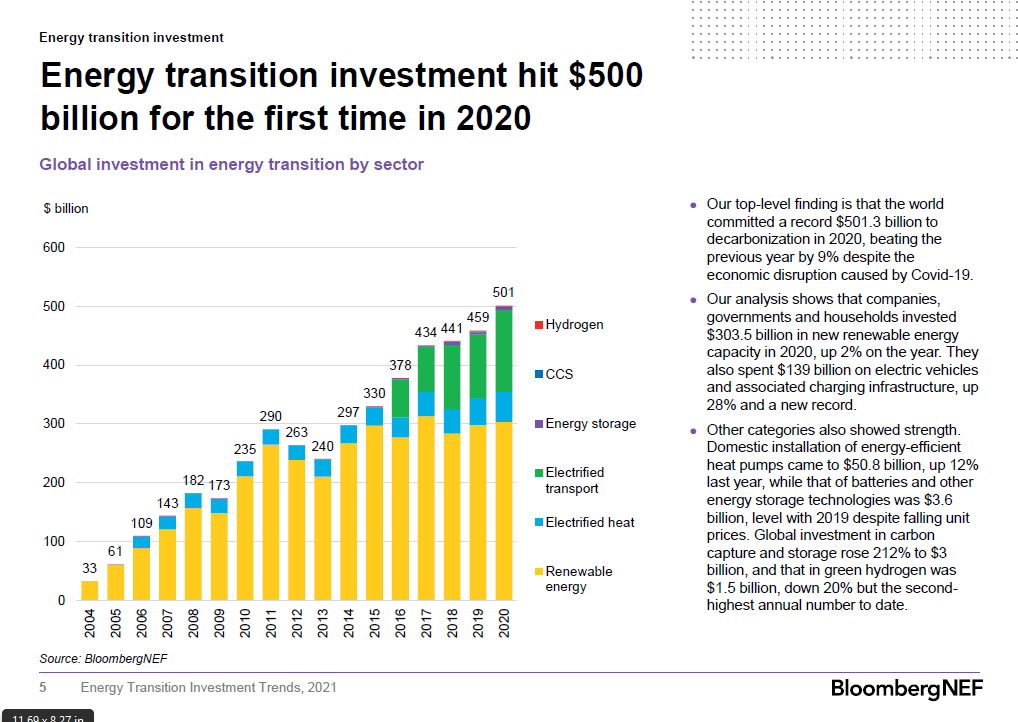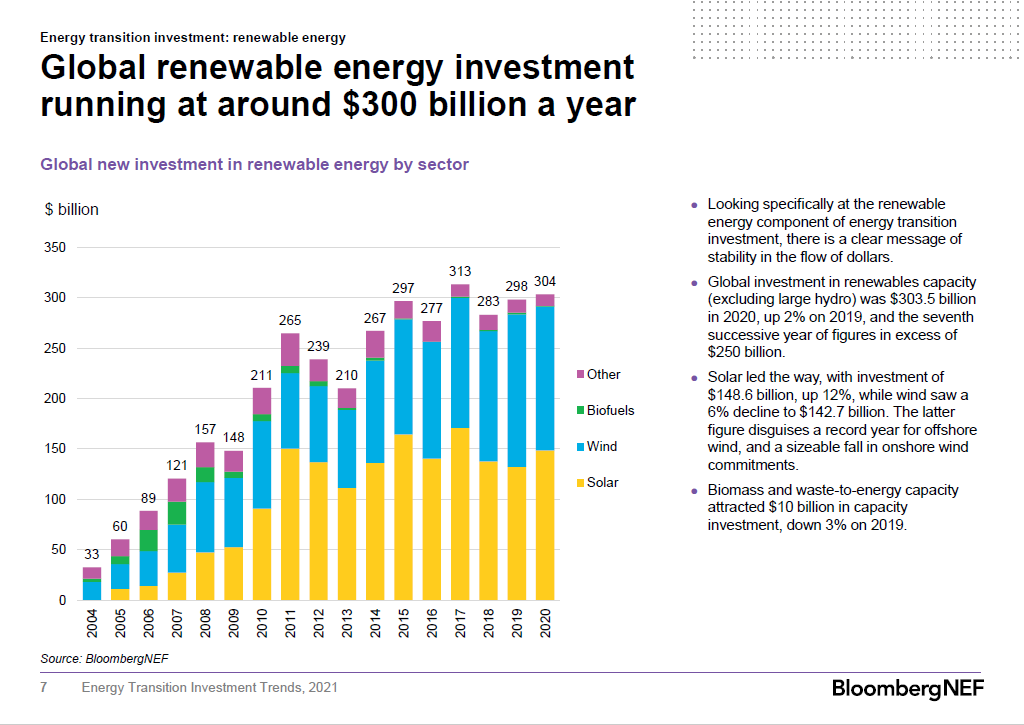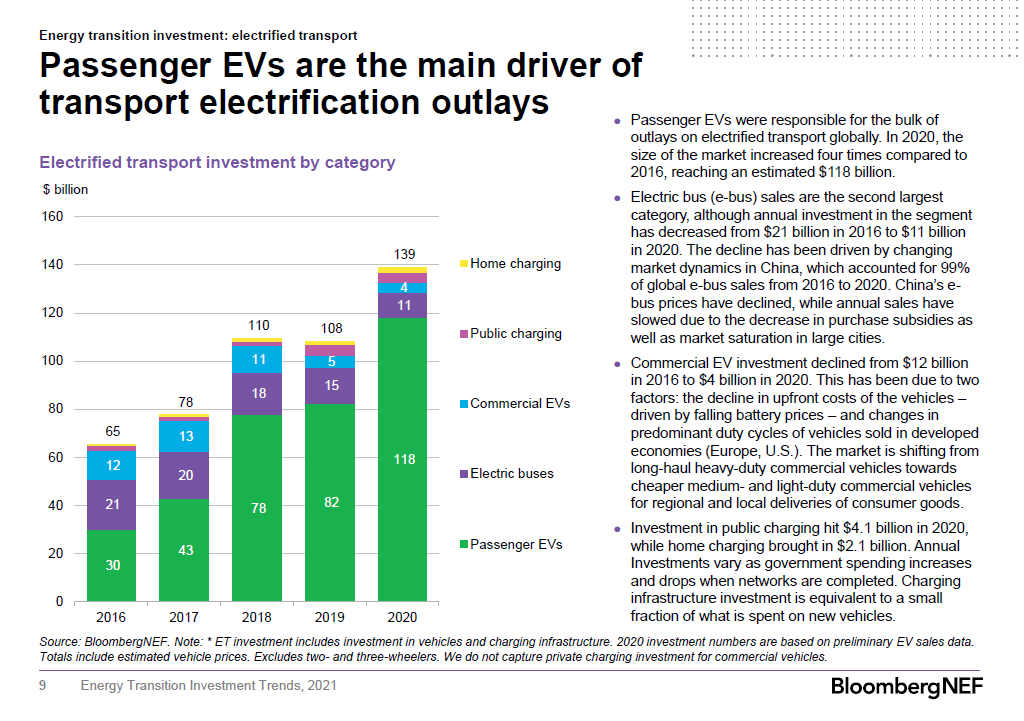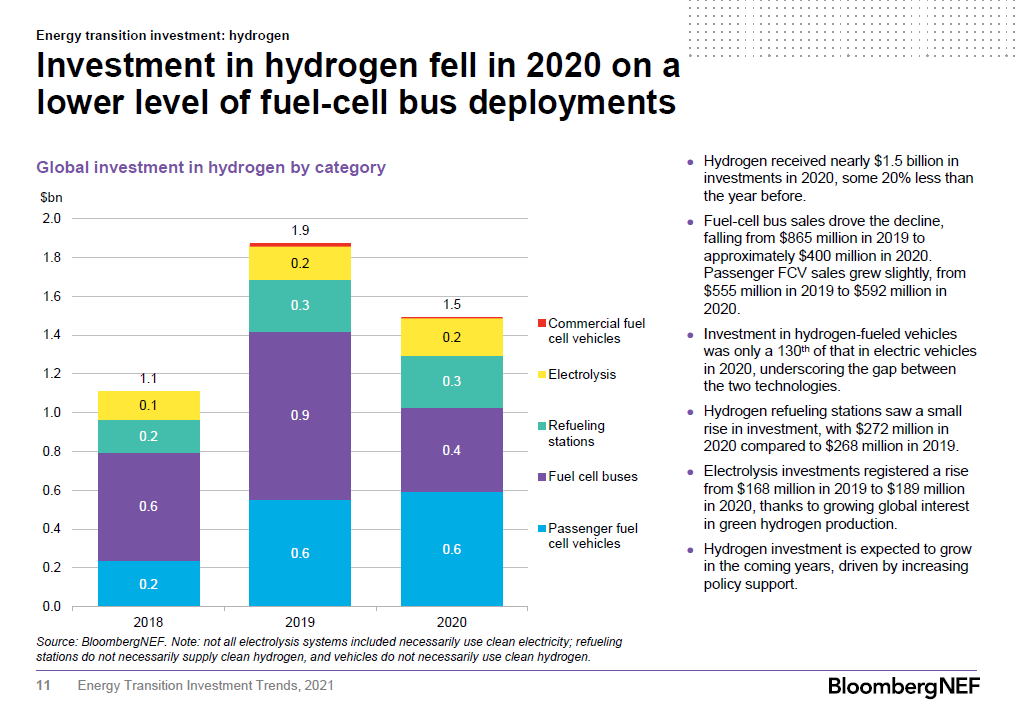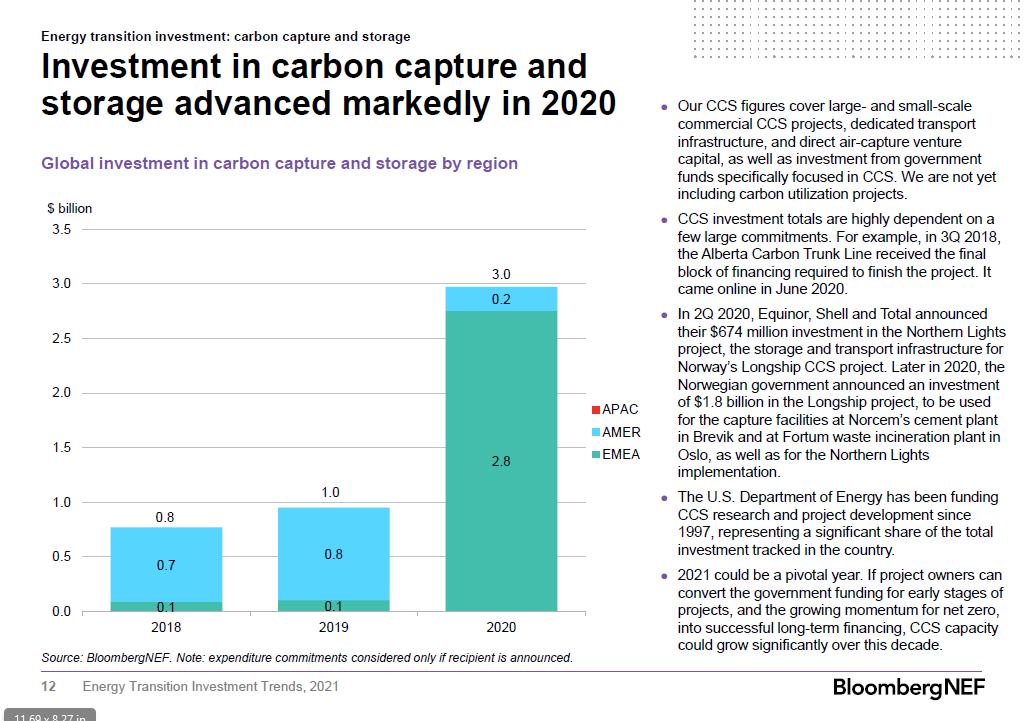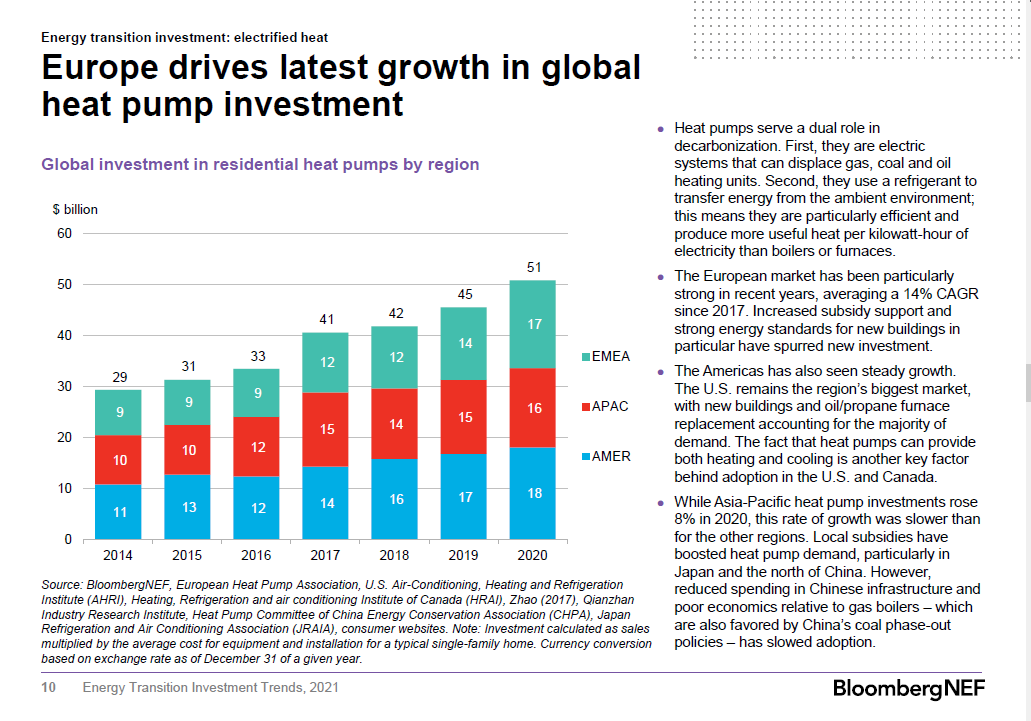A month ago we launched our Energy Transition Investment report, showing that the world invested over $500 billion in low-carbon transition in 2020.
https://about.bnef.com/blog/energy-transition-investment-hit-500-billion-in-2020-for-first-time/
I got Covid the day before, so didn't have much chance to reflect on our findings! Some belated thoughts:
https://about.bnef.com/blog/energy-transition-investment-hit-500-billion-in-2020-for-first-time/
I got Covid the day before, so didn't have much chance to reflect on our findings! Some belated thoughts:
The biggest contributors are renewable energy investment at $304bn and electrified transport at $139bn. But renewable energy investment has basically been flat since 2015, as falling costs offset rising installations. This needs to change.
This means all the growth is coming from the EV sector. In fact, EV investment is likely to overtake renewables in the next few years.
Strikingly, spending on charging infrastructure is an absolutely tiny share of EV spending. We worry a lot about how to get enough charging infrastructure built in the right places, and profitability is difficult - but in terms of actual $ volumes, it really isn't an issue.
Btw if you don't think EV purchases should be considered investment, think of it this way: Vehicles are durable assets that provide an economic good, and must be changed out as part of the energy transition. They have a market value (which usually declines) and can be financed.
The contrast with hydrogen is stark. Despite all the excitement, we only tracked $1.5bn in new money last year. Fuel cell vehicle spending was 130x smaller than EV spending. (We are missing some important categories but the overall message holds.)
CCS and hydrogen are still a tiny contributor to the energy transition. For comparison, we found at least $50 billion investment in residential heat electrification, versus just $4.5 billion for hydrogen and CCS combined.
In short, we are witnessing a two-speed energy transition. Renewables and electrification are either at scale or approaching it, while hydrogen and CCS are still struggling to build momentum.
But the truth is, no sector is doing enough. Although half a trillion dollars is an exciting milestone, it is not nearly sufficient. We need to be talking about trillions per year if we want to avoid a climate disaster.
Finally: there are still data gaps to fill, particularly on two critical pillars: energy efficiency and energy networks. Both of these can be estimated, but it remains tricky to track the fine-grained changes in investment from year-to-year, and country-by-country.
Some of the key team members who led the work are here on Twitter! @meredith_annex @tenglermartin @CBC727 @colinmckerrache @solar_chase @siyi_mi @YayoiSekine @JamesTFrith to name a few.

 Read on Twitter
Read on Twitter